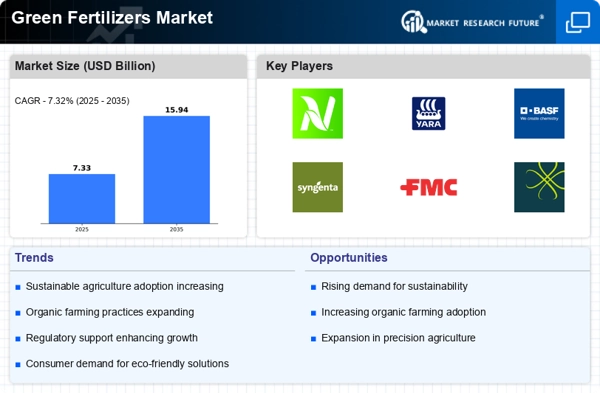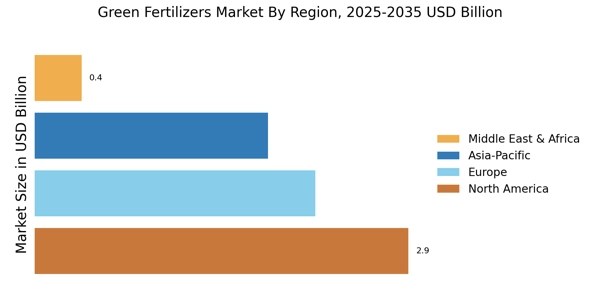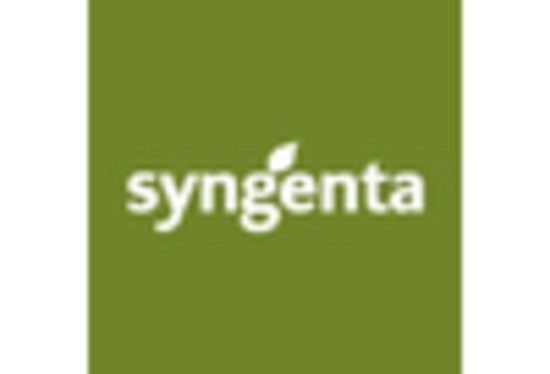Global Food Security Concerns
Concerns regarding food security are increasingly driving the Green Fertilizers Market. As the global population continues to grow, the pressure on agricultural systems intensifies, necessitating sustainable farming solutions. Green fertilizers offer a viable alternative to enhance soil health and improve crop resilience, thereby contributing to food security. Recent studies indicate that the adoption of organic fertilizers can lead to a 20% increase in soil fertility over time. This potential to improve agricultural productivity while maintaining environmental integrity positions the Green Fertilizers Market as a crucial player in addressing future food supply challenges.
Rising Consumer Preference for Organic Food
The increasing consumer preference for organic food is significantly influencing the Green Fertilizers Market. As health-conscious consumers seek products free from synthetic chemicals, the demand for organic produce is on the rise. This trend is prompting farmers to adopt organic farming practices, which in turn drives the need for green fertilizers. Market analysis suggests that the organic food sector is expected to grow by over 12% annually, creating a robust demand for organic fertilizers. Consequently, the Green Fertilizers Market is poised to benefit from this shift in consumer behavior, aligning agricultural practices with market demands.
Regulatory Support for Eco-Friendly Practices
Regulatory frameworks are evolving to support the adoption of sustainable agricultural practices, thereby bolstering the Green Fertilizers Market. Governments are implementing policies that encourage the use of organic fertilizers, often providing incentives for farmers who transition from synthetic to natural options. For instance, various countries have introduced subsidies aimed at promoting organic farming, which could potentially increase the market share of green fertilizers. This regulatory support not only enhances the credibility of the Green Fertilizers Market but also aligns with global sustainability goals, fostering a more resilient agricultural sector.
Technological Advancements in Fertilizer Production
Technological innovations are playing a pivotal role in shaping the Green Fertilizers Market. Advances in production techniques, such as the development of bio-based fertilizers and precision agriculture technologies, are enhancing the efficiency and effectiveness of organic fertilizers. These innovations are expected to improve crop yields while minimizing environmental impact. Market data indicates that the adoption of such technologies could lead to a 15% increase in the efficiency of nutrient delivery in the coming years. As these technologies become more accessible, the Green Fertilizers Market is likely to witness accelerated growth.
Increasing Awareness of Environmental Sustainability
The Green Fertilizers Market is experiencing a notable surge in awareness regarding environmental sustainability. Consumers and farmers alike are becoming increasingly conscious of the ecological impact of traditional fertilizers. This shift in perception is driving demand for eco-friendly alternatives. According to recent data, the market for organic fertilizers is projected to grow at a compound annual growth rate of approximately 10% over the next five years. This trend suggests that as more individuals prioritize sustainable agricultural practices, the Green Fertilizers Market will likely expand significantly, reflecting a broader commitment to environmental stewardship.


















Leave a Comment